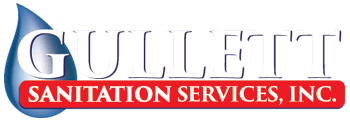

Wastewater management is one of the most pressing concerns for industrial and municipal sectors worldwide. With increasing population growth, urbanization, and industrialization, traditional wastewater treatment methods often struggle to meet the demands of environmental regulations and efficiency standards. Many conventional systems rely on mechanical aerators, diffused aeration, or surface aeration, which can be energy-intensive and prone to inefficiencies. As concerns about environmental sustainability continue to rise, industries and municipalities are seeking wastewater treatment solutions that optimize performance, reduce costs, and meet stringent regulatory standards.
Among the many innovations emerging in the industry, jet aeration has garnered significant attention as a game-changer in wastewater treatment. This technology offers enhanced oxygen transfer efficiency, better mixing capabilities, and energy savings compared to traditional methods. As wastewater treatment challenges become more complex, the shift towards jet aeration technology is becoming more evident, positioning it as the future of wastewater treatment solutions.
What is Jet Aeration and How Does It Work?
Jet aeration is a highly efficient process used in wastewater treatment to enhance oxygen transfer and mixing within aeration basins. This method utilizes high-velocity jets that combine air and liquid to create a powerful mixing effect, improving oxygen dissolution in wastewater. Unlike conventional aeration methods that rely on surface exposure or diffusers, jet aeration injects oxygen directly into the wastewater at high velocities, ensuring a more efficient and uniform distribution.
A typical jet aeration system consists of jet nozzles, a liquid pump, and an air compressor. The process begins with a high-speed liquid jet being discharged through specially designed nozzles. Simultaneously, air is introduced into the jet stream, creating a turbulence that promotes the rapid breakdown of organic matter. This dynamic interaction results in improved oxygen utilization, which is critical for the biological treatment of wastewater. The enhanced mixing also prevents sedimentation and promotes the homogeneity of the wastewater, leading to more efficient treatment outcomes.
What makes jet aeration stand out from traditional methods is its ability to deliver high oxygen transfer rates while consuming less energy. Unlike surface aerators that suffer from heat loss and inefficient oxygen diffusion, jet aeration provides a deeper and more controlled oxygen distribution. This efficiency makes it an attractive option for industries looking to improve their wastewater treatment solutions while maintaining cost-effectiveness.
The Advantages of Jet Aeration Over Traditional Methods
One of the primary reasons why jet aeration is gaining traction in the wastewater treatment industry is its superior efficiency compared to traditional aeration methods. The most significant advantage lies in its ability to achieve high oxygen transfer rates while minimizing energy consumption. Conventional methods, such as surface aeration and diffused aeration, often require extensive energy input to maintain proper oxygen levels. In contrast, jet aeration systems utilize hydraulic principles that enhance oxygen dissolution with less energy expenditure, making them more sustainable and cost-effective.
Another advantage of jet aeration is its exceptional mixing capability. Traditional aeration systems often experience issues with stratification and uneven oxygen distribution, leading to dead zones within the treatment basin. Jet aeration eliminates these problems by creating a highly turbulent environment that ensures uniform oxygenation throughout the entire wastewater volume. This results in better treatment performance, reduced sludge buildup, and improved overall system efficiency.
Furthermore, jet aeration systems offer greater durability and lower maintenance costs. Traditional mechanical aerators and diffusers require frequent maintenance due to clogging, wear and tear, and biofouling. Jet aeration systems, on the other hand, are designed with fewer moving parts and a self-cleaning mechanism, significantly reducing the need for maintenance and operational downtime. This advantage makes jet aeration an attractive choice for industries and municipalities looking for reliable and cost-efficient wastewater treatment solutions.
Another compelling benefit of jet aeration is its adaptability to various wastewater treatment applications. Whether in municipal wastewater treatment plants, industrial effluent treatment, or food processing wastewater management, jet aeration systems can be customized to suit different operational needs. Their flexibility in handling different wastewater compositions further strengthens their position as the future of wastewater treatment solutions.
The Role of Jet Aeration in Sustainability and Regulatory Compliance
Sustainability is at the forefront of modern wastewater treatment solutions. With stricter environmental regulations and increased public awareness about pollution control, industries and municipalities must adopt greener and more efficient treatment technologies. Jet aeration plays a crucial role in helping facilities meet sustainability goals while ensuring regulatory compliance.
One of the key sustainability advantages of jet aeration is its ability to reduce energy consumption. Aeration accounts for a significant portion of the total energy demand in wastewater treatment plants. By utilizing hydraulic energy to enhance oxygen transfer, jet aeration systems consume less power, leading to lower operational costs and reduced carbon footprints. This energy efficiency aligns with global efforts to reduce greenhouse gas emissions and promote sustainable industrial practices.
Additionally, jet aeration contributes to water conservation by improving the efficiency of biological treatment processes. Efficient oxygen transfer ensures that microbial communities responsible for breaking down organic pollutants remain active and effective, leading to better wastewater treatment outcomes. This improved efficiency minimizes the need for additional chemical treatments and sludge disposal, further reducing environmental impact.
Moreover, jet aeration systems support compliance with stringent water quality regulations. Many regulatory bodies, such as the Environmental Protection Agency (EPA), impose strict limits on oxygen levels, nutrient removal, and effluent discharge quality. The superior oxygen transfer and mixing capabilities of jet aeration ensure that wastewater treatment facilities can achieve and maintain compliance with these regulations, avoiding penalties and environmental liabilities.
As industries and municipalities continue to prioritize sustainability, the demand for jet aeration technology is expected to grow. Its ability to balance efficiency, cost savings, and environmental benefits makes it a vital component of future wastewater treatment solutions.
The Future of Wastewater Treatment: Embracing Jet Aeration
The future of wastewater treatment is centered around innovation and efficiency. As challenges related to water pollution, energy consumption, and regulatory compliance intensify, wastewater treatment facilities must embrace advanced technologies that offer long-term solutions. Jet aeration is emerging as a leading technology that addresses these challenges while providing superior performance and sustainability.
One of the primary reasons jet aeration is set to dominate the future of wastewater treatment is its adaptability to evolving industry needs. With increasing industrial production and urban development, wastewater compositions are becoming more complex. Jet aeration’s ability to handle varying wastewater characteristics makes it an ideal solution for diverse applications, from municipal sewage treatment to industrial effluent management.
Additionally, the integration of smart technologies with jet aeration systems is expected to enhance their performance further. The use of real-time monitoring, automated control systems, and data analytics can optimize aeration efficiency, detect operational issues, and minimize energy waste. These advancements will make jet aeration even more attractive to industries seeking intelligent wastewater treatment solutions.
Another factor that supports the widespread adoption of jet aeration is its cost-effectiveness. While initial installation costs may be comparable to traditional systems, the long-term savings on energy, maintenance, and compliance penalties make jet aeration a financially viable option. As industries continue to focus on cost reduction and resource efficiency, jet aeration will remain a preferred choice for wastewater treatment.
Conclusion
Jet aeration represents the future of wastewater treatment by offering unmatched efficiency, sustainability, and adaptability. Its ability to provide high oxygen transfer rates, improve mixing, reduce energy consumption, and ensure regulatory compliance positions it as the ultimate solution for modern wastewater treatment challenges. As industries and municipalities strive to enhance their wastewater treatment solutions, jet aeration will play a crucial role in shaping the future of environmental sustainability and water resource management.
Need Septic Contractors in Bethel, OH?
Gullett Sanitation Services, Inc. offers mobile de-watering of sludge and slurries in and around Bethel, OH, utilizing Roediger belt filter presses, as well as services and repairs on all major brands of home aeration systems. We also work with jet aeration and cleaning for sewer system lines (up to 8 inches in diameter), permits and consultation for biosolids, the transportation of non-hazardous wastewater, sludge removal from all types of waste lagoons, service and repairs on residential sewer systems, and the removal of grit, rags, and debris from anaerobic or aerobic digesters. Give us a call today and let us be your septic and dewatering service in Ohio!
